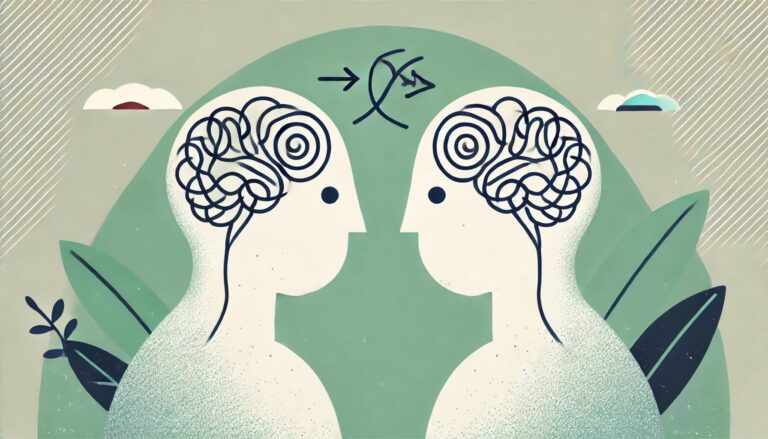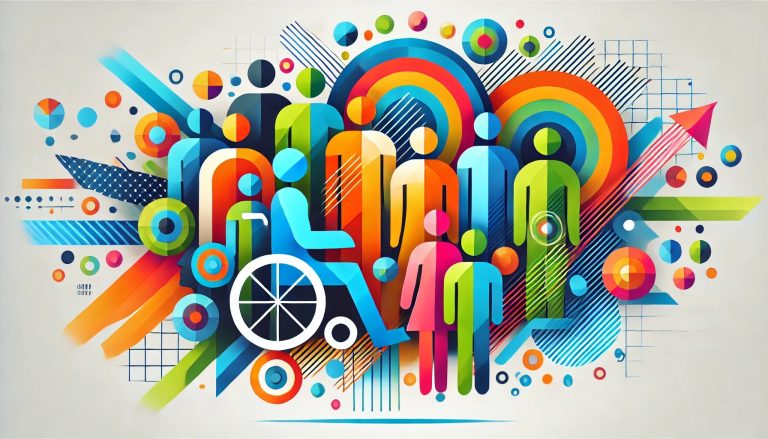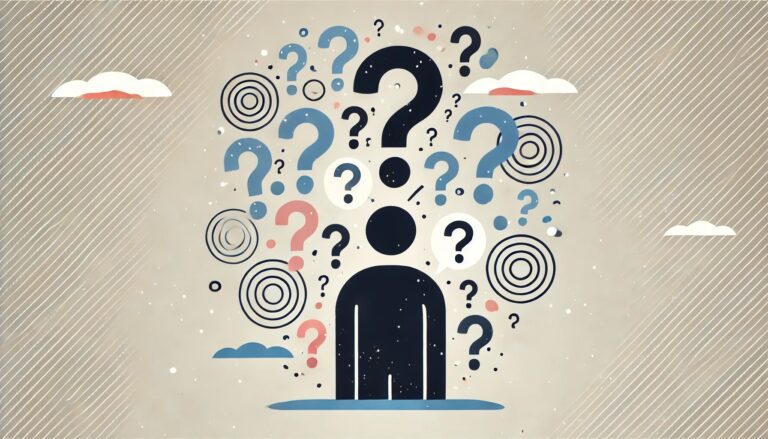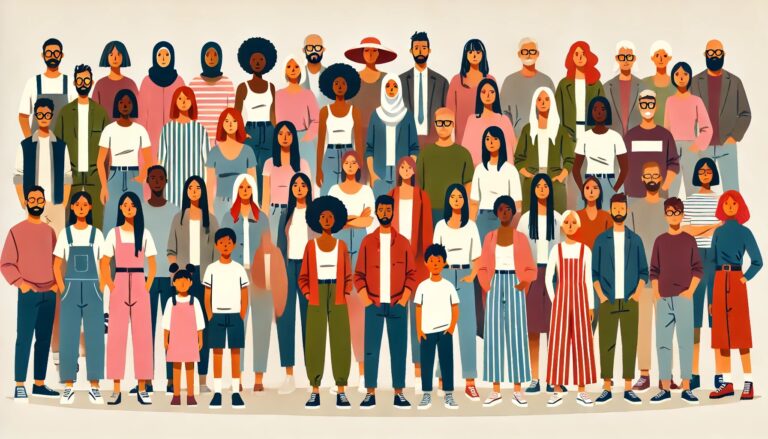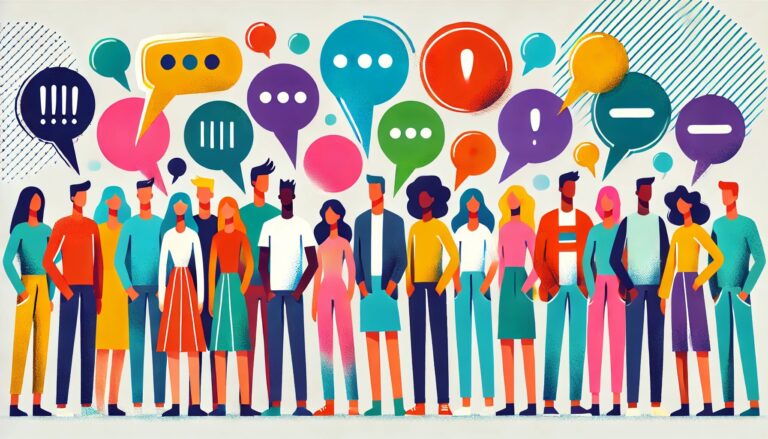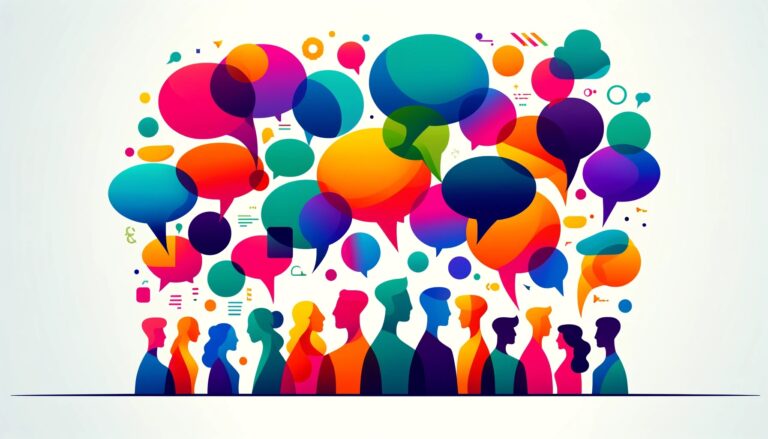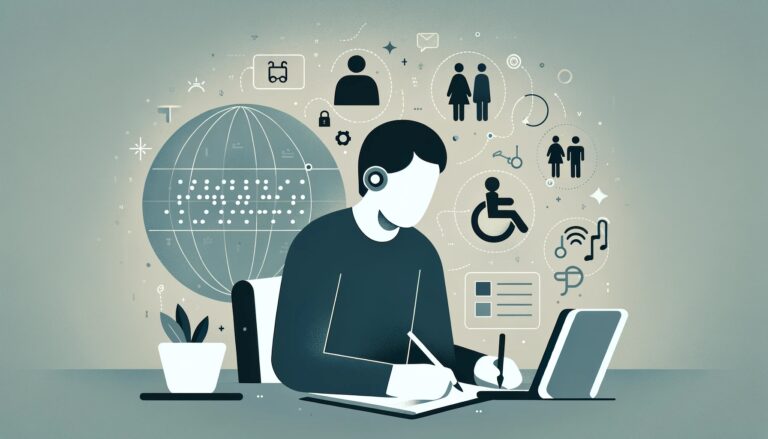
The Use of the Extended Masculine in Inclusive Language
The term “extended masculine” refers to the linguistic practice of using male-gendered terms as the default when the subject’s gender is unknown, unspecified, or collectively inclusive of all genders.
This practice is prevalent in many languages, including Spanish, French, and Italian, where nouns and adjectives are gendered. In English, similar usage appears in pronouns and specific generic terms (“he,” “mankind,” etc.), although English nouns do not have grammatical gender.
The Debate Around Gender Neutrality in Language
The discussion surrounding gender-neutral language is part of a broader movement toward inclusivity and equality, including us at InclusivitEasy. Advocates for gender-neutral language argue that traditional language practices, such as the extended masculine, reinforce outdated gender stereotypes and contribute to the marginalization of non-male individuals. They promote gender-neutral pronouns and formulations to create a more inclusive society where language does not default to male-centric norms.
On the other side, some argue that changes to language structure for inclusivity can be unnatural or confusing, suggesting that the impact of language on societal gender perceptions is overstated. This debate touches on linguistic, social, and psychological dimensions, as each change in language usage can reflect and influence societal values and beliefs.
The Sapir-Whorf hypothesis or linguistic relativity is a good way to understand more about the role of language in understanding the world and interacting with it, making it a good way to understand inclusive and non-gendered language.
Historical Context
Origins of Masculine as the Default
The use of masculine terms as the default linguistic standard has roots deep in the history of many languages.
This practice often originated not from deliberately prioritizing men over women but from social structures and linguistic evolutions that reflected male-dominated societies.
For instance, in Romance languages like French and Spanish, which evolved from Latin, the masculine form has been used as the neutral form in plural cases and when the gender is unknown. This norm was adopted from Latin’s grammatical structure, where the masculine plural form is used in mixed-gender groups.
Similarly, while English is not gendered in the same way as Romance languages, historical documents reveal a clear preference for masculine pronouns when gender is unspecified. This usage was formally recognized and cemented in grammar rules by the 18th century, which dictated the use of “he” as a universal pronoun, as explained in “Gender and Language Change in English” by Anne Curzan.
Linguistic Shifts Toward Inclusive Expressions
As societies have become more aware of gender issues and equality, there has been a push to modify language practices to be more inclusive. Historical shifts towards inclusive language have often been gradual and met with resistance, yet they reflect changing societal values.
One early example of attempting to neutralize gender in language can be traced back to the 19th century when feminists began advocating for more inclusive language as part of the broader suffrage movement. This advocacy has grown and transformed, leading to more significant linguistic changes in the late 20th and early 21st centuries. For instance, introducing the singular “they” as a gender-neutral pronoun in English responds to the need for non-binary language inclusivity.
Institutions play a crucial role in these shifts. Academic, legal, and media bodies have increasingly adopted and endorsed gender-neutral language. Guidelines and style manuals, such as those published by major universities and the Associated Press, now recommend gender-neutral terms to avoid biased language. These recommendations have helped propagate more inclusive expressions in academic, professional, and casual contexts.
Adoption of Gender-Neutral Language in Various Languages and Communities
The trend towards gender-neutral language is gaining traction globally across different languages and cultures. In Swedish, for example, the gender-neutral pronoun “hen” was added to the official dictionary in 2015, offering an alternative to “han” (he) and “hon” (she) for referring to persons without specifying their gender. This addition reflects a significant societal shift towards recognizing and respecting non-binary and transgender identities within the language.
Similar discussions in German have led to the usage of gender-neutral forms such as “Studierende” instead of “Studenten” (students), with the former being a more inclusive form that does not specify gender. German also employs asterisks and colons in written language to include all genders in one term, for instance, “Lehrer*innen” to mean all teachers regardless of gender.
In non-European contexts, conversation varies widely but is similarly progressive in many places. For instance, in India, where several languages are spoken, activists and scholars are pushing for the use of gender-neutral terms in Hindi and other local languages to accommodate non-binary individuals better.
Challenges and Criticisms
Resistance to Changing Traditional Language Forms
Despite growing trends towards inclusivity, there remains significant resistance to altering traditional language forms. Critics often argue that such changes disrupt linguistic integrity and complicate communication. For many, traditional language forms are considered a cornerstone of cultural identity, and modifications are unnecessary concessions to political correctness. This perspective is particularly prevalent among older generations and linguistic purists who feel that a language’s structural and grammatical rules should not be subject to change based on social movements.
Additionally, some educators and linguists express concerns about the practical implications of teaching and standardizing new pronouns and grammatical structures, fearing that it may lead to confusion in learning languages as a native or second language. These debates are often heated and reflect a broader societal struggle over changing norms and values.
Complexities and Confusions Arising from Non-Traditional Gendered Forms
The introduction of non-traditional gendered forms, while aimed at inclusivity, often brings complexities and confusion. For instance, although increasingly accepted, the use of the singular “they” in English still faces grammatical pushback for being “incorrect” or confusing, especially regarding verb conjugations and agreement in complex sentences.
Creating and adopting non-gendered forms is even more challenging in languages with deeply gendered grammatical systems like Spanish. Efforts to use “x” or “e” as gender-neutral endings (e.g., “Latinx” or “Latine” instead of “Latino” or “Latina”) have been met with mixed reactions. Some argue these changes disrupt readability and spoken flow, which are crucial in communication.
These linguistic changes also challenge automatic translation tools and software, which struggle to adapt to rapidly evolving language use. This technical challenge highlights a gap between linguistic innovation and technological capability, affecting global communication and information dissemination.
Influence of Inclusive Language on Gender Perceptions
The adoption of inclusive language has a profound impact on societal views of gender. By systematically changing our language, we can help shift perceptions and reduce gender biases inherent in traditional language forms.
Inclusive language encourages recognition of the diversity of gender identities beyond the binary male and female framework, promoting a more nuanced understanding of gender as a spectrum.
Research suggests that language shapes cognition and influences how we categorize and relate to each other. Therefore, using gender-neutral language can play a critical role in challenging the stereotypes associated with traditional gender roles. For instance, referring to a “firefighter” instead of “fireman” not only normalizes the fact that this profession is not limited to men but also supports gender equality in the workplace.
Real-World Impact on Different Groups
The impact of inclusive language is particularly significant for the LGBTQ+ communities. Gender-neutral pronouns and terms validate historically ignored or marginalized identities, providing a sense of belonging and recognition. This validation is crucial for the mental health and social integration of individuals who may not identify strictly as male or female. It also influences public discourse by bringing more awareness to the issues faced by these communities.
Moreover, the impact extends beyond LGBTQ+ groups. Inclusive language fosters a general environment of sensitivity and respect, which benefits all individuals by creating more equitable social interactions. It challenges all people to reconsider their assumptions about gender and to think more carefully about how they communicate.
The effects of these changes are also seen in educational settings, where inclusive language promotes equality and reduces gender-based discrimination, encouraging all students to participate freely and aspire to roles irrespective of their gender.
Studies like those from the University of Warwick demonstrate the positive effects of gender-neutral language in reducing gender bias. These findings underscore the transformative power of language in shaping societal norms and behaviors.
Thus, embracing inclusive language is about respecting individual identity choices and cultivating a societal structure that accommodates and celebrates diversity.
Future Outlook
As societies continue to evolve, so too will the languages we speak. The increasing global focus on diversity and inclusion will likely drive further changes in language use to reflect shifting attitudes toward gender. The trend towards gender-neutral language, which began as a ripple in academic and activist circles, is becoming more like a steady current influencing broader linguistic practices.
In the coming years, we can expect more languages to adopt officially recognized gender-neutral terms, much like the Swedish “hen.” Additionally, new pronouns and terms that are currently emerging might become normalized, forming part of the standard linguistic repertoire. This linguistic evolution will mirror societal acceptance of various gender identities, making inclusivity a natural aspect of everyday communication.
Technology will play a crucial role in facilitating and accelerating changes in language use. Language processing tools, such as text editors and autocorrect features, are already beginning to include options for gender-neutral language. As these tools become more sophisticated, they will likely help normalize the use of inclusive language by suggesting alternatives that avoid gender bias.
Education will be equally critical in shaping future language use. Curriculums that embrace inclusive language from early education will make generations more adept at using and accepting non-traditional gender terms. Educational institutions are also likely to continue as key battlegrounds for language reforms, with policies and practices that promote inclusivity serving as models for other sectors.
Furthermore, continuous dialogue in educational settings about the importance of inclusive language can cultivate an environment supportive of these changes. As more research highlights the positive impacts of inclusive language on societal well-being and equality, educational policies are expected to align more closely with these findings.
In summary, the future of language looks inclusive, with technological advancements and educational reforms steering the way. As society grows more accepting of diverse gender identities, our language will adapt to mirror these changes, fostering a culture where all individuals feel seen and respected.
Conclusion
The evolution of language to reflect modern understandings of gender is not merely a linguistic adjustment but a crucial societal advancement. As we have explored, the shift towards more inclusive language helps dismantle longstanding gender stereotypes, supports the recognition of diverse gender identities, and promotes a more equitable society. This transformation in language usage is instrumental in creating environments where all individuals feel recognized and valued.
However, the journey towards fully inclusive language is ongoing and requires continuous effort and adaptation. It is essential for all sectors of society—educational institutions, media, corporations, and individual speakers—to participate actively in this linguistic evolution. Doing so ensures that our language keeps pace with our advancing social values and norms.
Moreover, ongoing dialogue and research into inclusive language practices are vital. Such efforts help refine our understanding of language’s impacts on thought and culture and guide the effective implementation of language changes. Researchers, linguists, and activists must continue working together to study the outcomes of inclusive language policies and develop new strategies that address emerging needs and challenges.
Interesting read:
- Gender and Language: Theory and Practice by Lia Litosseliti
- The Handbook of Language and Gender, edited by Janet Holmes and Miriam Meyerhoff
- The Politics of Language by David Crystal
- Language Change: Progress or Decay? by Jean Aitchison
- The Language Instinct: How the Mind Creates Language by Steven Pinker
- In Praise of Prejudice: The Necessity of Preconceived Ideas by Theodore Dalrymple
- The Power of Babel: A Natural History of Language by John H. McWhorter
- Get with the Pronoun
- G Hen der Neutraling


